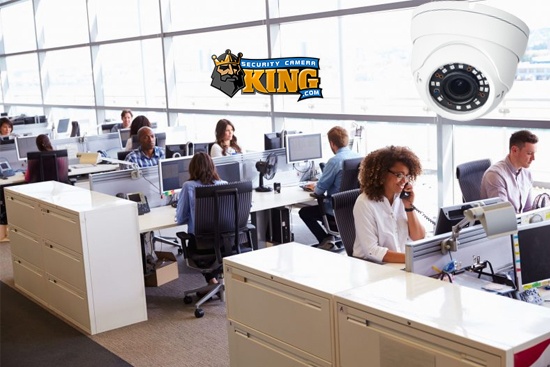There are many types of remote security cameras and many ways to view the cameras remotely. There are even security cameras designed for home use that are wireless and can be viewed on a standard television. However, when we speak of most robust, professional security systems that permit remote viewing, we are talking about IP cameras or IP systems. IP, which is a computer technology abbreviation that stands for Internet Protocol, permits a variety of remote viewing options for security cameras.
There are a few methods for making your security camera “remotely viewable,” however; the key ingredient for all of them is the idea of Internet Protocol or networking. Although there are several possible variations for capturing, sending, and storing the camera’s signal the basic process works like this.
An IP security camera system works by converting the camera’s video signal into a digital file that can be transmitted via a networking system. Depending on the type of system, the signal, by way of the local network, can even be sent to the internet making the security camera remotely accessible from anywhere internet is available.
Many cameras connect to a DVR or Digital Video Recorder system. They do this by a physical connection through a cable or by utilizing various wireless technologies (similar to the wireless technology used by wireless computer routers and receivers). Most wireless cameras have a useful maximum range of approximately 300 feet.
Regardless of how the camera’s signal is transmitted, it is normally transmitted to a personal computer, DVR system, IP video server, or directly to the internet. If the camera is an older analog-type CCTV camera, the signal will be transmitted to a “capture card” that will “capture” the analog video and convert it into a binary or digital file form. The purpose of transmitting the camera signal to a personal computer, DVR system, or IP video server is to prepare the digital file for “streaming” so that it can be sent over a Local Area Network (LAN) or the internet. Streaming technology allows for the digital data to be transmitted and viewed in real time, while maintaining small file sizes to prevent overloading the network. Personal computers, DVR systems with specific, dedicated video networking circuits, and IP video servers can each be utilized to do this “file processing” work and transfer the final product to the LAN or internet.
Once the video signal has been prepared by the system and has reached transmission to a LAN or the internet, viewing opportunities are seemingly endless. The camera, video system, or IP video server normally comes with software that prepares the signal and provides software applications for viewing. Based on the file type and application software, the camera can be viewed remotely in a variety of ways.
Some of the easiest remote viewing camera/systems/software allow the user to view the camera using an internet web browser. Some applications may even allow the user to control the camera through the web browser while others may use some sort of proprietary network video recording (NVR) software.
In addition to using personal desktop computers, you can also view your security cameras remotely using just about any personal communication appliance, provided the device supports the format that the security system is using. That means you can view real-time, live images from your camera(s) using a laptop computer, cell phone, or even a PDA. It wouldn’t be surprising to see an application for an iPod if there isn’t one already out there. In fact, some remote systems provide an alert to the user via e-mail if the camera has detected motion and has started recording activity.
Remote viewing expands the possibilities and capabilities of security cameras In various ways. The user can check their cameras at work or while on travel. Constant monitoring systems can be installed and signals transmitted to a remote 24/7 monitoring service that can alert the user of any activity or suspicion. The possibilities are forever becoming endless.











